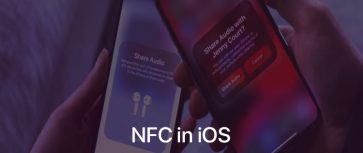Best Practices for Corporate App Strategy and Development
Mobility and Bring-Your-Own-Device (BYOD) have become a quickly adapted activity in the organizations. With the expansion of the big number of mobile phones in this digital era, organizations have reacted quickly to transform their workplace into more accessible to become productive. The process of accessibility, storage and distribution of data has got streamlined by using mobiles, smartphones, and computers. Enterprise Mobility has unlocked the door to work from any location at any time.
“If you don’t have a mobile strategy, you don’t have a future strategy.” – Eric Schmidt, executive chairman, Google
To exaggerate mobility potential, create a well-planned corporate app strategy to develop, distribute and manage enterprise mobile application. Listed below are few:
Approach business goals
Enterprise Mobility is the future where it greatly influence an employee productivity and create brand awareness. When considering the mobile for business for the very first time, think about the strategic business goals that should be achieved with the mobile app.
Whether incorporating mobile for the first time or rethinking of the strategy, it is always essential to adjust the strategy in a way that precisely targets the business goals. The mobile app is not a replacement of a strategy, henceforth, strategy should focus on meeting company goals certainly. Business goals will help the company in taking the critical decision during mobile app development.
Mark audience demands
Mobile has transformed the way people interacts in the real life. As the requirement of every user is different and therefore one must ensure it responds to the user demands as they expect. By assembling audience requirements, start implementing them to build a mobile app strategy to deliver a seamless user experience.
During the development phase, decide what the audience demands? How their demand will be fulfilled? An audience research is fundamental for an app development process. The focus of a mobile app development strategy should be understanding client’s requirements and then defining a clear vision to meet their objectives.
Think about “user experience”
The mobile device is a trend now. Everyone used this handheld device to direct the new ways of working in an Enterprise. This has also raised concern among Enterprise to develop an app that offers the same freedom and user-friendliness to the user as their native app. With the mobile apps flooding the market, it becomes challenging to deliver a positive user experience that features smooth interaction. For this, ensure the design of the app feature easy user interaction which is very important.
A better way could be to analyze the user requirements that would help in defining a mobile strategy. Look to provide user capabilities and serve with more than their expectation. For Example:
- Responsive user interfaces to allow easier access of the mobile app across all devices. The app should present the content in the same way as in other devices
- An easy navigation to find information under fingertips. Skip asking too much information during signup and ask in fewer taps to aid better user experience
- Empower the user with the freedom to access an app like hosted, SaaS or mobile with a sign-in from the play store
- Anytime a gadget may turn down or grayed out. Allow user to easily switch to any other device
- Develop an easy and simple app to allow sharing and syncing files from any device
Using Secure API
An Application Programming Interface (API) uses an application back-end information to build an architecture of the mobile application. Using this approach organization can allow their partners to develop, market and maintain their app without developing the app themselves. As the API’s are exploding in the market, therefore it is important to leverage security standard to ensure a smooth and seamless experience.
The Cloud
Allowing the access of information from one device to another cannot be completed without using cloud services. However, managing the infrastructure of the enterprise mobile would be cumbersome due to lack of proper control and data storage. Implementing Cloud intersects with the corporate app strategy to meet security and back-end integration.
Service delivery strategy
A mobile app not only depends on an application but also on third-party apps, SaaS solution, different OS etc. Therefore, while developing an app make sure to define a strategy to think how an app will behave with other available apps or platform.
The mobile app can be accessed by following four ways:
- Native app access: In this scenario, user purchase an app, modify it according to their requirements and record enterprise data. Here, security is a major concern as the data is stored freely without defining the solution for sensitive data.
- Virtual access: Organization often works on the virtual apps and desktops where the data are directly stored in a datacenter. This means data can live in the datacenter and hence no security is required to ever maintain in the device itself. However, successful accessibility of the data highly depends on the connectivity.
- Containerized experience: Enterprise creates a container where all types of apps like native mobile apps, custom, and third party apps are stored. IT professionals have access to this container and therefore can easily manage the app and data. Also, user can have access of their own app. Apps can be easily managed, an organization can apply their IT policies and technical authority can perform the necessary network settings. In the event of any damage or loss, data from the container can be easily removed remotely.
- Fully managed enterprise experience: This is a highly secure Enterprise app feature where the concept of BYOD is not allowed. Mobile apps are highly secure, organization policies, remote wipe, geographical restriction and other highly secure features were embedded. As the apps are controlled and managed by the IT professionals, hence there is no opportunity for the users to customize it.
Define Networks
As different applications demand different networking requirements, therefore it is important to streamline the process by adopting a network specific to an app. If implemented a high level of security to an app, then the user experience will be hindered. Therefore, restrict the network to a specific app or container with their specific settings. This would reduce extra steps of the user and they will be ready to work with an app with a simple click.
Protect sensitive data
Every organization has sensitive data that requires a high level of protection. Although, IT professionals in every organization implement security to all data, however, the same security procedure is also implied on the sensitive data. When it comes to mobility, the same concept is applicable to meet the business security demands.
Usually, companies have three types of data in their premises which requires protection:
- Public Data: Such type of data is not sensitive or confidential. It can be accessed anywhere irrespective of the device. The user is only required to configure network settings specific to the app.
- Confidential Data: As the name defines, this data is not available for public access. Meaning that, Enterprise can provide its virtual access via. BYOD by accompanying security features like data encryption and remote wipe etc.
- Restricted Data: Every organization has restricted data which required a high level of security. Such data can be accessed only via. Enterprise-grade devices and no BYOD device can gain their access. The data possess a high risk of business damage, reputation damage and other consequences that need attention.
Define Ownership of the app
Traditionally, organizations have their own set of committee who control Enterprise Mobility. As there are several complex processes going in the organization, therefore it is important to define a structure which includes role-based right. Everyone should be aware of their roles and right in the organization to meet the objectives.
Business Compliance
Every organization faces security threat which is dealt by following the company policies and compliance standards. Only meeting the security requirements is not enough, instead compliance measures should be fully documented and open for audits. Always ensure to develop a mobile app that meets government policies and industry standards.
Enterprise Mobility concept has quickly branched through organizations and become an important element of an IT industry. Having a Corporate app strategy, every employee in an organization will be benefited with a highly secure data access, seamless experience and convenient access of data anytime at any remote location. Learn more about Enterprise Mobility to understand the organization needs and how they can be fulfilled.
With the advanced technological era where the things are moving fast and technology has spread its wings across several platforms, learning platform is not untouched....
 Jun 10, 2016
Jun 10, 2016 



Comments
Leave a message...